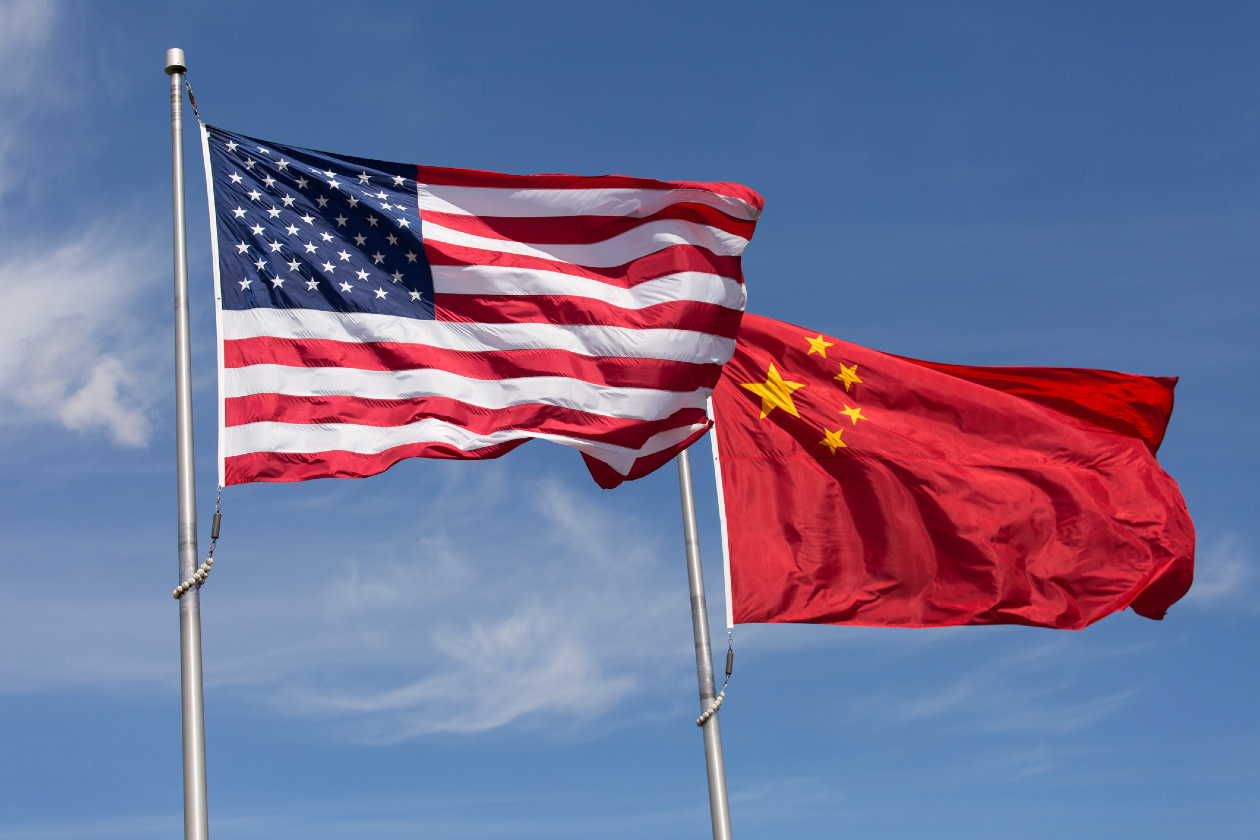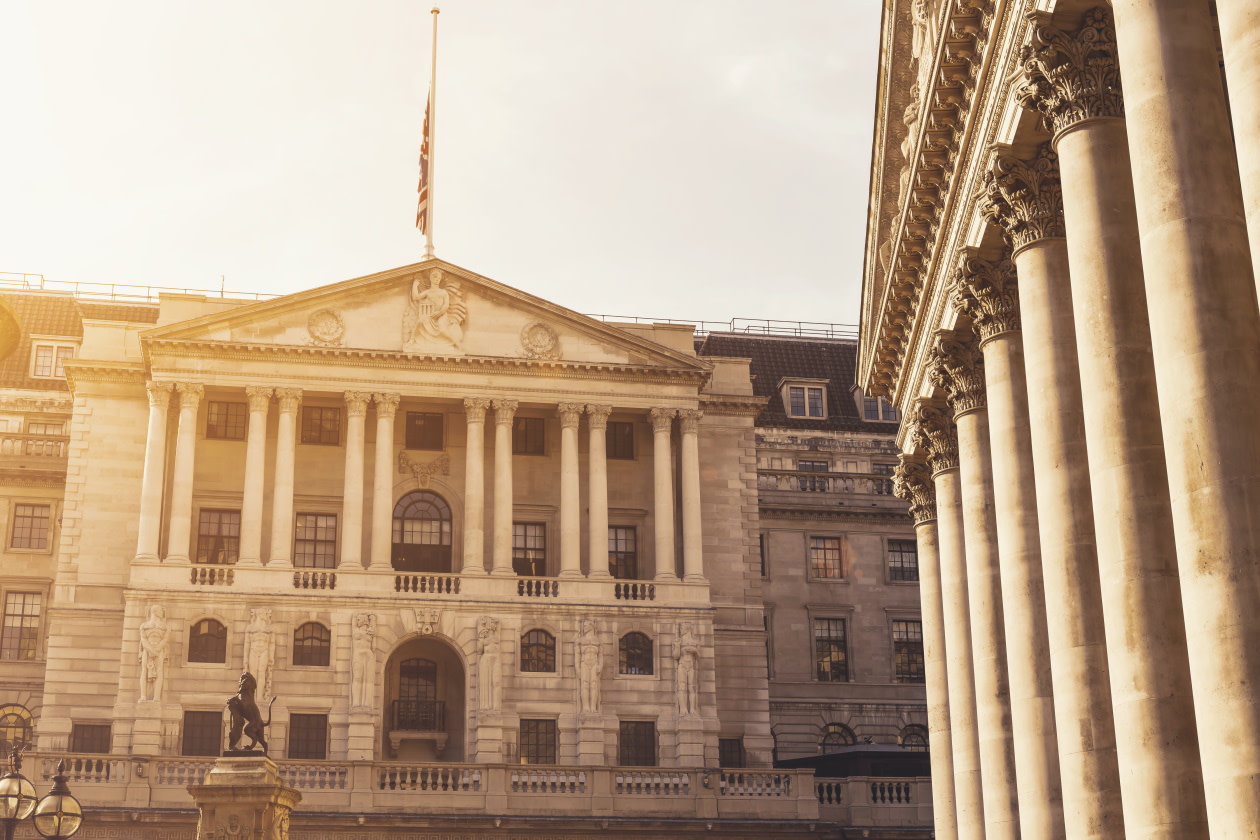The Cambridge Dictionary has yet to choose their word of the year, but ‘volatility’ is certainly my term of 2025, and we’re only in month five.
Since the last quarterly client report, a single White House press conference wiped $9.5tn off global stock markets, the gold price has rallied to yet another all-time high and the Bank of England Monetary Policy Committee (MPC) has cut the base interest rate in the UK by 0.25%.
Receive expert fund insights direct to your inbox every week, including research, investment articles and in-depth sector reviews.
Then came Trump’s ‘Liberation Day’
Donald Trump has been stating his intent to introduce double-digit tariffs since his Presidential campaign trail last summer.
Long before his political career began, Trump appeared on US chat shows in the 1980s, stating that he believed tariffs were the only way to address trade imbalances with the US.
Yet investors across the world were shocked when President Trump announced punitive tariffs on 2 April, calling it ‘Liberation Day’.
In the following two trading days, trillions of dollars were wiped off global stock markets.
Just a few days later – apparently alarmed at soaring US government bond yields, and the likely successive sharp increase in the cost of borrowing – Trump called a 90-day reprieve on many the higher tariff rates. However, he still left a universal base tariff rate of 10% in place and hiked import taxes against China even further.
Markets rallied in response.
But the subsequent euphoria hasn’t quite been enough to correct all the losses seen in the US stock market year to date – or restore investor confidence.
US consumer confidence fell last month to an almost five-year low, the fifth monthly fall in a row – and the six-month outlook for the economy was at levels not seen since 2011.
Trade talks green shoots
While the context is subdued, there are some reasons to remain hopeful.
Last week, two trade deals were confirmed – between the UK and India, and the UK and the US.
Full details of the UK-US deal have yet to be revealed, though UK Prime Minister Sir Keir Starmer has secured support of our steel and automotive sectors.
A third deal, between the US and China has also progressed over the weekend in Switzerland.
While we might be instinctively more interested in the UK-US deal, it’s the US-China talks that have the most influence over both our investment portfolios and even domestic economic outlook.
The world’s two largest economies are locked in a trade war that could influence global growth, inflation rates and even geo-political security.
Global supply chains are more complex and expensive while this continues, either because they have to absorb the cost of tariffs themselves or pay to re-route through more in-favour nations.
A resolution could mean a sustained rally. Lack of resolution the opposite.
This article isn’t personal advice. All investments and any income from them can rise and fall in value so you could get back less than you invest. Yields are variable and no income is ever guaranteed. If you’re not sure if an action is right for you, ask for financial advice.
What about interest rates?
Trade talks aren’t the only bright spot this month for investors – the interest rate environment has improved too, at least this side of the pond.
The Federal Reserve’s Open Market Committee voted to hold rates last week, because of concerns about higher inflation and unemployment.
Federal Reserve Chair Jerome Powell said trade tariffs had brought too much uncertainty to the economic outlook for the Committee to cut rates.
But the Bank of England did cut rates by 0.25% the following day, with members split on their preferred outcome – five voted to cut rates by 0.25%, two by 0.5% and the final two voted to hold rates at 4.5%.
The MPC was voting before the news that the UK and US had secured a trade deal, but the events of the past month were sure to have influenced the decision.
This is unlikely to be the end of the ‘higher-for-longer’ era however.
Before last week the market was pricing in three more rate cuts in the UK this year, with a 50% likelihood of a cut in the next meeting in June.
This has now fallen to a 20% likelihood, and gilt yields having initially fallen on the news rose back to near 4.5% for the 10-year bond. Rewarding investors with real yields in exchange for the likely continued market and macro uncertainty.
How to invest during stock market uncertainty
Investing against a backdrop of such uncertainty is tough. Markets are quick to price in optimism – a tweet, a rumour – and just as quick to discount those titbits when they fail to result in immediate resolution.
It’s worth remembering in these times that investing is a long-game, and that volatility can create opportunities.
Diversification has been a hard sell in recent years – when the vast majority of investment returns have come from just a handful of US tech companies. But in volatile markets, such as these, holding different types of asset classes, styles and geographies is key to limiting your losses.
Gold, fixed income funds, infrastructure and US smaller companies were the research team’s picks for 2025, and our conviction in their long-term portfolio benefits remain. As always, there are no guarantees.
You could also consider investing regularly through a direct debit – this way you can benefit from pound-cost averaging.
Pound-cost averaging is a powerful way to help smooth out the ups and downs of the market.
When you invest monthly, you buy more units or shares in an investment at lower prices if the value falls, helping you achieve better returns. However, if investment prices continue to rise, you’ll buy fewer units or shares at higher prices.
By investing at many different times, you avoid the risk of investing all your money when the market is at its highest. You should still regularly review your investments to be sure they’re right for your objectives and attitude to risk.
Start investing by Direct Debit by 26 June 2025 in an HL Stocks and Shares ISA or Self-Invested Personal Pension (SIPP) and we’ll refund a year’s worth of account charges back in cash on your total monthly payments - letting you invest at no cost.
Your Direct Debit must stay in place for one year to qualify. Your cash refund will be paid by July 2026. See full offer terms. Other charges may apply.







